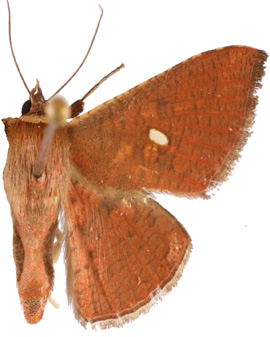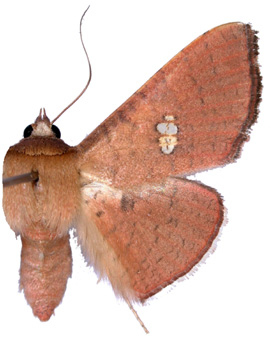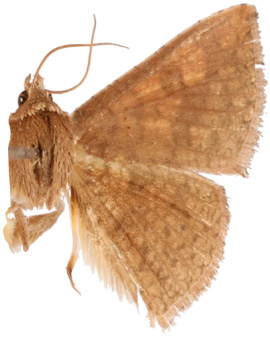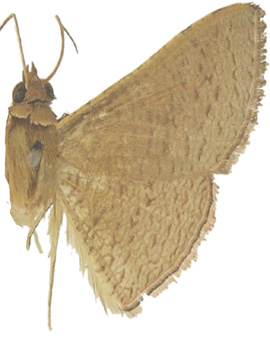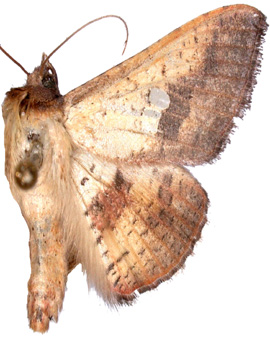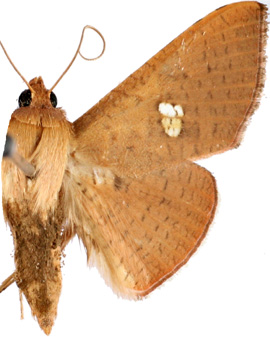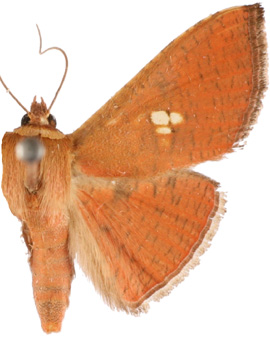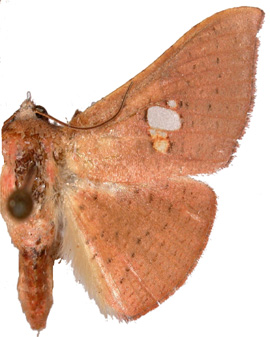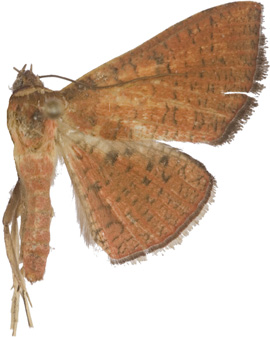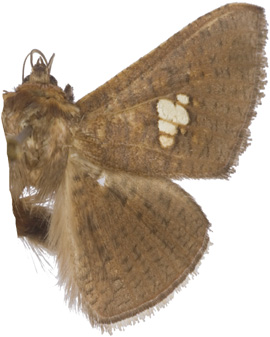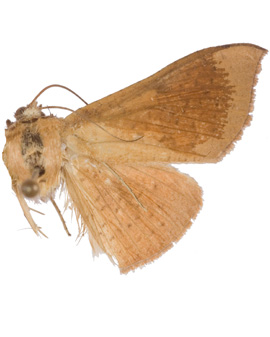Scientific classification
Animalia > Arthropoda > Insecta > Lepidoptera > Ditrysia > Thyridoidea > Thyrididae > Striglininae > Banisia
Genus Banisia Walker, [1863] 1864
Type species: fenestrifera Walker, [1863] 1864:78 (Banisia), by original designation (Hampson, 1897:615). Transfer to Thyrididae Whalley (1964). He considered it a good genus.
Syn. Durdara Moore (1882c:176). Type species Phalaena (Noctua) myrtaea (Drury 1773:4) by original designation. Stat. n. to Banisia (Swinhoe, 1890b: 289).
Syn. Neobanisia Whalley (1967:45). Type species Striglina antiopa (Viette, 1954:120, Pl. 5) by original designation. Stat. n. to Banisia Whalley (1976: 141).
Syn. Trophoessa Turner (1911:97, 99). Type species Striglina antiopa (Turner 1911) by monotypy. Stat. n. to Banisia (Whalley, 1964:117).
Syn. Vernifilia Schultze (1907:364). Type species Vernifilia hyalipunca (Schultze, 1907) [= B. fenestrifera fenestrifera Walker, [1863] 1864 by monotypy. Stat. n. Whalley (1964:117).
Generic description: A proboscis is present. The labial palps are three segmented. The eyes lack interfacetal hairs. The antennae are moderately ciliate. The FW R veins usually arise from the cell, only rarely having R2+R3 (a character given by Whalley (1967: 47)). Fore tibiae with epiphysis. Hind tibiae with two pairs of spurs and a pair of spines at the distal end. Males have a bifid uncus and a modified gnathos. Female with a large oval and usually spiny signum in the bursa (Whalley 1971a: 58-59).
Banisia is a pantropical genus with more than 50 species. About 15 occur in SE Asia (RTS:129). Most species have grey, red-brown or orange wings uniformly covered with fine reticulate and strigillate patterning. Most species are typified by pale fenestrae in the centre of the FW. These can be a single patch or a group of smaller pale patches. The genus is complicated, some species having extreme genitalic modifications. No one set of characters can be used to define the genus, although the females have a characteristic signum in the bursa. Whalley (1976) arranged the species into groups which show closer affinities to each other than between the groups. Genitalic examination is vital for definitive identification. See Whalley (1976: 143-145) for a key to males and a detailed description of most species.
There are several dark Banisia species; B. idalialis (Walker, 1859e), B. lobata (Moore, 1882b), B. myrsusalis (Walker, 1859e), B. owadai (Inoue, 1976) and B. ryukyuensis (Inoue, 1965), the latter two restricted to Japan. They are small, dark-brown species with black strigiform markings and no fenestrae in their HW but there is usually a cluster of white and yellowish fenestrae in the middle of the FW which differ from species to species but are also variable within a species. Most of these species have males with tibial scale tufts. Living specimens are usually a deep glossy purplish brown but that fades to a dark greyish brown. See Plate 10, Fig. 220a for a live specimen of Banisia myrsusalis (Walker).

